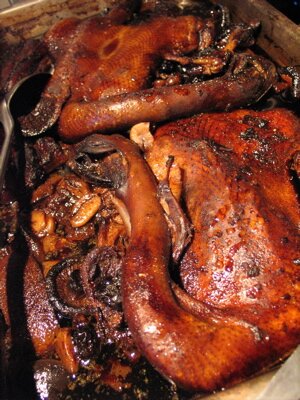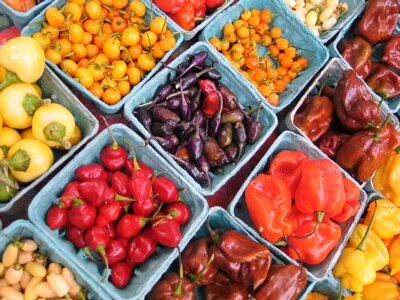strawberry fields
Unlike many wild fruit of the Northern hemisphere - often too sour, too small, or too tough - wild strawberries are some of the tastiest things that can grow on plants. They are generally tiny - each little berry the size of a large pea - but each packs a wallop of flavor that puts your average supermarket strawberry to shame.
All strawberries come from the genus Fragaria, and the supermarket specimens are probably a variety of garden strawberry, F. ananassa, or F. virginiana. At least thirty other varieties grow in the wild. One prevalent both in the States and in Russia is a forest strawberry, or F. vesca - the shape and color of droplets of blood and only a little bigger. They grow in lightly wooded areas, clearings and meadows, and are garden strawberries writ large; they smell of delirium and taste of fairy tales. Like fairy tales, forest strawberries are incredibly delicate - they should be eaten within hours of picking, transport badly, squash each other with their own weight, and disintegrate or get hopelessly waterlogged if washed. Here they are not washed at all - unless you are completely paranoid, you’ll quickly forget about this hygienic glitch once you taste them.
Growing right next to forest strawberries and sometimes among them are field strawberries, F. viridis. Field berries are larger, rounder, and more sturdy, and grow on taller plants. Unlike their forest cousins, they can be picked before they are fully ripe, because they are amazingly delicious green - not yet fully sweet, but already fully flavorful, with a taunting taste of lush green and sunshine yellow and a rustle of grass. When ripe, field strawberries turn a modest pink and acquire a sweeter, more straightforward flavor.
Where wild strawberries grow, they are easy to find, growing in large rusty patches in low grass. Their season is now - forest berries are almost gone, but field strawberries are still sold in buckets in local markets an by the roadside when one drives into the country. They are a significant source of supplementary income for the local villagers.
Any true Russian will eat these berries raw and plain, perhaps with a sprinkling of sugar; after you and everyone you know can eat no more, field berries especially make excellent jam. Forest berries are also good for jam, but their season is too short and making jam out of them is generally considered a waste. Forest berries would make an excellent strawberry fool, or, for an East European touch, can be whirred together with sour cream.


